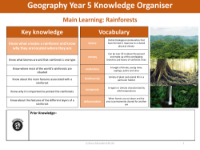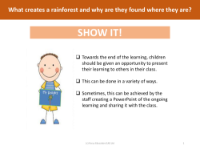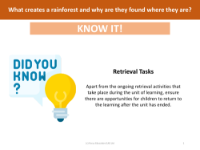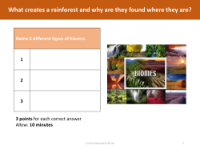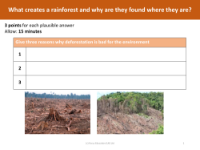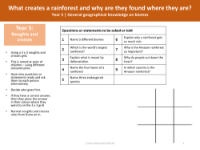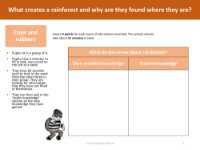Picture match - Parts of the rainforest canopy
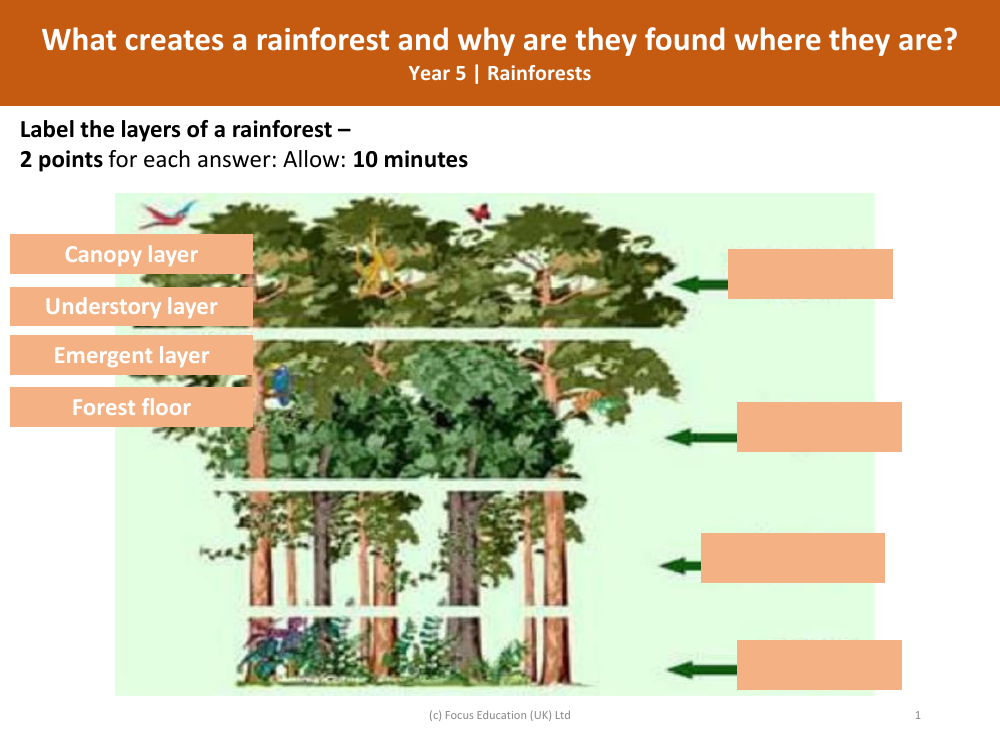
Geography Resource Description
In a Year 5 educational activity focused on rainforests, students are tasked with labelling the different layers of a rainforest. This interactive exercise, which is part of a broader lesson on rainforests, helps children to understand the complexity and structure of these vital ecosystems. The four primary layers they learn about are the emergent layer, which is the very top where the tallest trees reach above the rest; the canopy layer, which is dense and home to a rich biodiversity; the understory layer, where less light penetrates and smaller trees and plants thrive; and the forest floor, which is the ground layer teeming with decomposing leaves and nutrient cycles. Students are allocated 10 minutes to correctly identify and label these layers, with 2 points awarded for each correct answer.
The lesson also delves into the formation of rainforests and their geographical locations. Students explore the climatic and environmental factors that contribute to the creation of rainforests, such as consistent rainfall and warm temperatures, and why these forests are predominantly found in equatorial regions. Understanding the conditions that foster rainforests allows students to appreciate the reasons for their unique biodiversity and the importance of their conservation. This educational content is provided by Focus Education (UK) Ltd and is designed to align with the curriculum, enhancing students' knowledge of natural habitats and environmental science.

